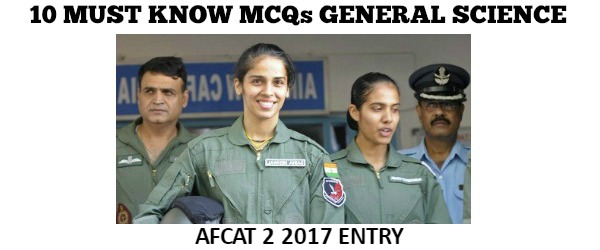AFCAT Exam is the Air Force Common Entrance test, which is conducted by the Indian Air Force twice every year. Through this exam men and women can apply for different branches of the Indian Air Force. These branches include the Flying Branch, Technical Branch and Ground Duty Branch. The minimum educational qualification is Graduation however for different branches the educational criteria is branch specific. Lets have a look at the syllabus of the AFCAT Exam,
Best Coaching for AFCAT 2017 Entrance
General Awareness:
History, Sports, Geography, Environment, Culture, Current Affairs, Politics , Civics, Basic Sciences, Defence, Art etc.
b) Verbal Ability in English:
Comprehension, Error Detection, Synonyms, Antonyms, and Testing of Vocabulary, Sentence Completion etc.
c) Numerical Ability:
Decimal Fraction, Simplification, Average, Percentage, Ratio & Proportion, and Simple Interest, Profit & Loss
d) Reasoning and Military Aptitude Test section:
Verbal Skills and Spatial Ability.
10 Must Know MCQs From AFCAT 2 2017 General Science Section
Based on the previous year AFCAT question papers and AFCAT exam pattern we are sharing some AFCAT Exam General Science Sample Questions, We hope our readers will get an idea on the types of questions that arrive in AFCAT exam and help them along in preparations.
Q. Which of the following is a non metal that remains liquid at room temperature?
A. Phosphorous
B. Bromine
C. Chlorine
D. Helium
Q. Which of the gas is not known as green house gas?
A. Methane
B. Nitrous oxide
C. Carbon dioxide
D. Hydrogen
Q. The property of a substance to absorb moisture from the air on exposure is called
A. osmosis
B. deliquescence
C. efflorescence
D. desiccation
Q. Most soluble in water is
A. camphor
B. sulphur
C. common salt
D. sugar
Q. The filament of an electric bulb is made of
A. tungsten
B. nichrome
C. graphite
D. iron
Q. In fireworks, the green flame is produced because of
A. sodium
B. barium
C. mercury
D. potassium
Q. Which of the following metals remain in liquid for under normal conditions?
A. Radium
B. Zinc
C. Uranium
D. Mercury
Q. Decibel is the unit for
A. speed of light
B. radio wave frequency
C. intensity of sound
D. intensity of heat
Q. Very small time intervals are accurately measure by
A. White dwarfs
B. Quartz clocks
C. Atomic clocks
D. Pulsars
Q. A chronometer measures
A. colour contrast
B. sound waves
C. time
D. water waves





















